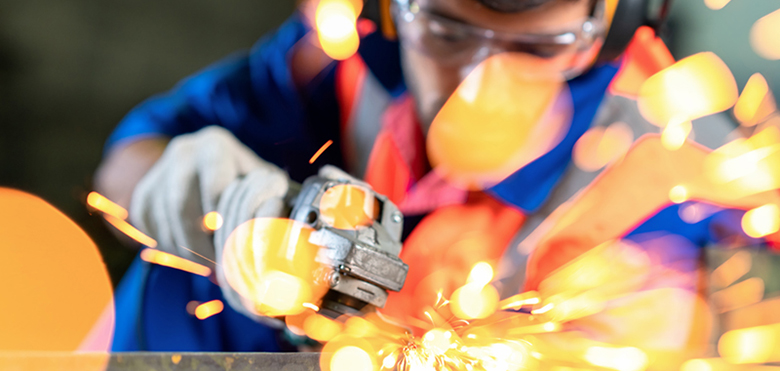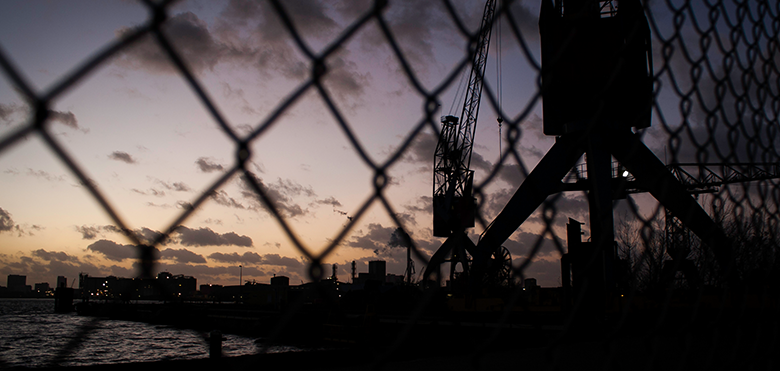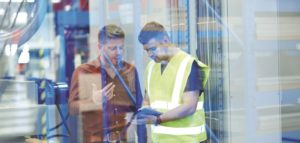Workplace safety in critical infrastructure and industrial operations: minimizing risks, maximizing business continuity
Critical infrastructure and other industrial operations are essential to society and the economy. Maintaining business continuity is key, yet workplace accidents that endanger employees and halt operations are a real risk in this sector. This makes implementing systems which help to ensure workers are in the right place at the right time (or, at least, not in the wrong place at the wrong time) crucial. They are vital for employee wellbeing, as well as keeping systems up and running.
No system can guarantee removing the risk of accidents entirely. Yet taking a proactive approach to on-site safety with intelligent, cost-effective surveillance solutions allows you to reduce that risk significantly. By creating a safer working environment, you’ll boost business continuity through minimizing downtime.
This process doesn’t need to be complicated. By choosing surveillance solutions that operate on an open platform, you can easily integrate new cameras with your existing infrastructure. Taking this approach means you can get more value out of those prior investments while making the site safer. This goes for not only improving awareness of on-site risks in real-time to ensure you can respond before an incident occurs, but also preventing avoidable accidents and improving safety protocols for the long-term.
Acting on real-time incidents
Fire and smoke alarms underpin basic workplace safety, but traditional alarm systems and in-person observations can only go so far in terms of improving workplace safety. After all, you cannot act on a potential risk if you’re not aware of it. To improve risk management in industrial working environments, these traditional systems need to be complemented by solutions which provide greater situational awareness.
On-site surveillance delivers coverage of far greater scope and accuracy than in-person observations. Whether it’s a thermal camera detecting an unexpected temperature change to help you spot a gas leak or a camera with in-built analytics recognizing smoke for early fire prevention, this technology can alert you to risks in advance.
Integrating cameras into your existing industrial control and response systems offers support in real-time. If the analytics at work within the surveillance system spot a risk, such as detecting a person falling over, an alert can be sent so that the people who need to respond can act quickly.
While network cameras provide a visual of a potentially risky scenario, network audio solutions are also key to workplace safety – enabling you to communicate directly with employees on-site if an evacuation or another safety procedure needs to be carried out. With connected surveillance solutions, you’re able to not only catch potentially risky situations before they result in an accident but can also ensure that workers get quick support when needed.
Importantly, intelligent analytics make a range of automated safety functions possible, plus you can set the parameters to suit the needs of your operations, reducing the risk of false alarms. As a business, connected surveillance solutions are increasingly crucial to mitigating risks in real-time and handling emergencies quickly.
Prevent workplace accidents in the near future
Intelligent video solutions are also key to reducing avoidable accidents on-site. With connected cameras, network audio, and intelligent analytics, you can configure your system to spot dangerous behavior and address employees directly so you can help them stay out of harm’s way or prevent an incident from occurring. For example, you can customize AI-powered solutions to detect the presence or lack of PPE, such as hard hats, enabling you to alert a worker if they need to put on the necessary safety gear. Similarly, solutions using cameras with analytics can be developed to keep those areas which carry a greater risk of injuries clear, sending an alert if a worker gets too close to the restricted area.
Taking this proactive approach to prevent accidents provides a vital fail-safe that ensures even if employees forget about a safety measure, there is a solution in place to remind them. As an employer, you can rest assured that you are doing your utmost to keep workers safe. Additional benefits to taking these precautions include fewer claims, less liability and avoiding unnecessary downtime caused by accidents and resulting investigations.
Importantly, you can choose to implement this surveillance while dynamically masking (or blurring) people – whether whole individuals or just their faces – to protect workers’ privacy while also looking out for their safety. When deployed through a versatile, edge-based application, dynamic masking options make it possible to prevent avoidable accidents while meeting the most stringent privacy requirements. Video is processed and masked directly on the camera rather than on the server, limiting the risk of leaking unmasked footage.
Analyze risks to improve safety policies
Beyond identifying unsafe practices in real-time or avoiding near-term accidents, surveillance solutions can also provide insights to improve safety policies and avoid issues in the future. You can review and analyze workplace incidents, injuries, and near misses in depth via recorded materials (or a live feed) to understand their root causes and devise safety protocols to address them.
Both network cameras and other sensors, such as body worn cameras, can provide footage in an accurate and unbiased way to support the continual improvement of safety policies. Using this insight from surveillance solutions can complement the steps already in place to monitor health and safety within critical infrastructure and other industrial operations, whether that’s a spot check by management as they walk around the site or a quarterly analysis of incidents by HR. Using this technology to further improve health and safety practices helps to keep your workforce safe and enable long-term business continuity.
Use an open approach to improve workplace safety
Working in a dangerous environment, and often by yourself, can be stressful: workers want to know checks and balances exist. There is an opportunity to use innovative, open surveillance technology to detect and address early indicators of safety risks – putting your workforce safety first.
Despite often having multiple legacy surveillance systems in place, critical infrastructure and industrial operations sites are rarely set-up for a truly proactive approach to on-site safety through smart surveillance. By implementing surveillance solutions that operate on an open platform and can make the most of prior network camera investments, you’ll be able to act quickly on real-time incidents, prevent avoidable accidents, and improve safety processes for the future. Taking this approach allows you to look out for your workers while also looking out for your bottom line by minimizing the risk of claims and downtime.
Find out how Axis surveillance solutions can enable a proactive approach to workplace safety:




